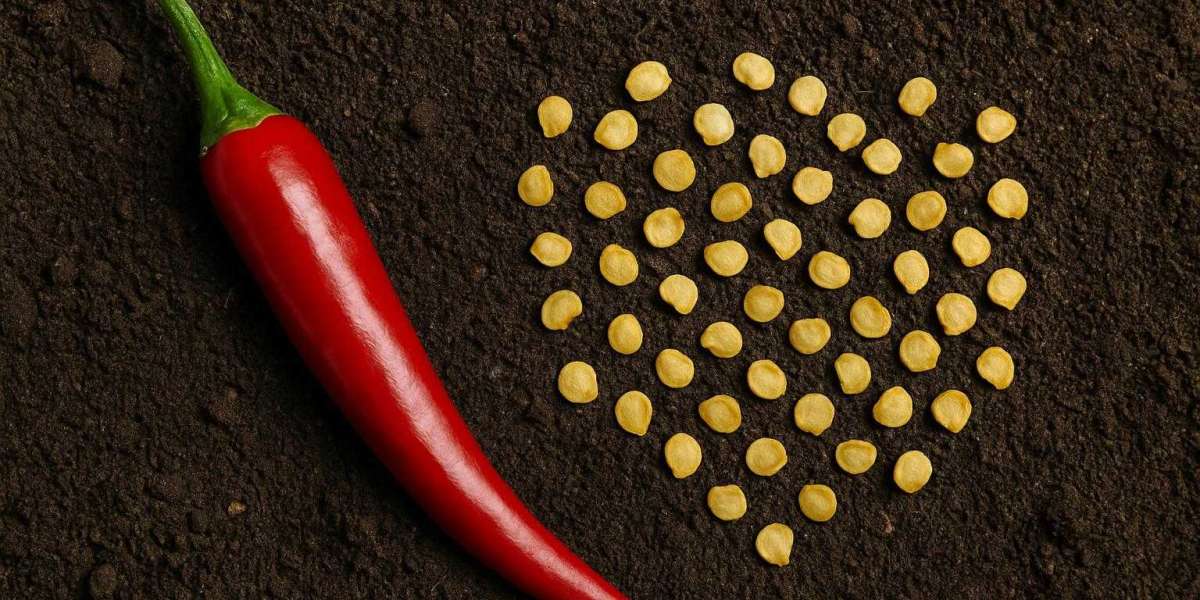For generations, traditional chilli seeds have been at the heart of countless farming practices. Passed down through families or sourced from local seed banks, these seeds carry not just genetic material but a legacy of culture, taste, and regional farming knowledge. But with modern agriculture leaning heavily toward hybrid seeds, high-yield varieties, and genetically improved strains, many farmers are left wondering—do traditional chilli seeds still hold value in today's demanding market?
Let’s explore how traditional seeds compare to modern expectations and whether they remain a wise choice for farmers who balance heritage with profitability.
Knowing Traditional Chilli Seeds: Not Just Ancient Types
Landrace seeds, also known as traditional chilli seeds, are cultivars that have evolved over time to naturally adapt to regional climates and farming practices. They usually have distinctive flavors, a variety of shapes, and resistance qualities that have been developed naturally rather than through laboratory breeding.
Because these seeds are open-pollinated, they can be preserved and replanted without losing their essential qualities, unlike hybrid seeds, which cannot provide this.
However, in a market fixated on uniformity, productivity, and rapid development cycles, these seeds confront new challenges despite their historical significance and rustic appeal.
How Traditional Seeds Fit into Modern Farming Goals
Today’s farmers often prioritize factors like yield, disease resistance, and market demand. Hybrid seeds dominate because they deliver on these fronts, offering higher productivity and resistance packages backed by research.
However, traditional seeds still hold critical advantages that often get overlooked:
- Natural adaptability to local climates, reducing the need for intensive inputs.
- Superior taste and pungency, highly sought after in niche markets.
While high-yield hybrids often perform well under ideal conditions, traditional varieties tend to show more resilience in challenging environments—such as erratic rainfall or low-input farming systems.
The Yield Gap: Fact or Exaggeration?
The claim that conventional seeds yield less than hybrids is one of the main arguments against them. Although this assertion is partially accurate, it is not a whole picture.
Research indicates that when cultivated in conditions that complement their genetic characteristics, traditional chilli cultivars can offer competitive yields. Their performance is frequently improved by elements like sustainable practices, integrated pest management, and organic farming.
It's important to remember that traditional varieties may outperform hybrid seeds in marginal soils or without significant chemical inputs, while hybrid seeds may provide 30–40% higher yields under intensive farming.
Market Trends: Is There Still Demand for Traditional Chilli?
Market preferences vary regionally. Because of their distinct flavor, color, and spice profile, traditional chilies frequently command higher prices in local and organic markets. For authenticity, several regional cuisines and food sectors even call for traditional variants.
Purchasing seeds from reliable vendors is important in this situation. Farmers can meet market and yield demands by using platforms such as Sarpan Chilli Seeds Online, which provide access to carefully chosen varieties that combine traditional traits with dependable performance.
The Role of Seed Purity and Genetic Integrity
Farmers who continue to use older varieties are becoming increasingly concerned about the quality of their seeds. Open-pollinated strains run the risk of losing their distinctive characteristics over time due to cross-pollination with hybrids or other strains.
Farmers must actively manage the processes of careful selection, regulated pollination, and even isolation to preserve genetic integrity. The benefit? Farmers can become seed stewards and maintain control over their crop cycle year after year with conventional seeds, unlike hybrids.
Conventional Seeds in Sustainable and Organic Agriculture
Traditional seeds have been revitalized by the organic agricultural movement. They are ideal for low-input, sustainable systems because they spontaneously adapt to local pest and disease pressures, generally requiring fewer chemical inputs.
Farmers who use traditional seeds frequently report lower input costs by 25–30%, primarily because they rely less on synthetic fertilizers and pesticides, according to a report by the International Federation of Organic Agriculture Movements.
Furthermore, these seeds often thrive in polyculture systems, which are systems that grow multiple crops together and are known to enhance soil health and biodiversity.
The Taste and Cultural Connection
Flavor is a market driver that goes beyond simple gastronomic pleasure. Conventional chilies frequently have distinct heat profiles and flavor characteristics that hybrids cannot match. From regional cuisine to global gourmet markets, there is a desire for genuine flavor that can only be met by traditional types.
"What grows with care, tastes with character—and traditional seeds carry that story in every harvest."
Cultural value is another factor. Traditional chilies are more than just a commodity in many areas, as they are closely tied to celebrations, traditional foods, and local farming methods.
Addressing Common Myths About Traditional Chilli Seeds
Let’s debunk a few persistent myths that might be holding farmers back:
- Myth: Traditional seeds are outdated and unsuitable for commercial farming.
They may have limitations in industrial-scale mono-cropping, but they thrive in diverse farming systems and niche markets. - Myth: You can’t make a profit with traditional chillies.
Premium pricing, especially in organic or specialty markets, can make traditional varieties highly profitable when marketed correctly. - Myth: Traditional seeds are more susceptible to pests and diseases.
Many landrace varieties have natural resistance bred through years of adaptation, reducing reliance on chemicals.
Balancing Heritage with Modern Farming Techniques
Many farmers achieve success by utilizing traditional varieties in contemporary farming frameworks, combining the best aspects of both approaches. Precision farming, organic pest management, and crop rotation can enhance the benefits of conventional seeds without compromising yield.
Sites that provide useful guidance on incorporating traditional seeds into sustainable farming methods include AgriFarming's Chilli Farming Guide.
Are Traditional Seeds a Smart Choice in the Era of Climate Change?
Seed resilience is more important than ever as climate unpredictability rises. Due to their adaptation to local conditions, traditional seeds frequently exhibit greater resistance to stress, including drought, pests, and temperature fluctuations.
The FAO's 2024 Seed Security study highlighted the importance of traditional seeds in ensuring food security, especially in areas that are susceptible to climatic shocks.
Frequently Asked Questions
- Can traditional chilli seeds compete with hybrids in yield?
While hybrids generally yield higher under intensive conditions, traditional varieties can perform competitively in organic, low-input, or climate-challenged environments. - Is it cost-effective to grow traditional chillies?
Yes, especially for farmers targeting local markets, organic buyers, or specialty food industries. Lower input costs and premium prices often balance out lower yields. - Do traditional chilli seeds require special farming practices?
They benefit from biodiversity-friendly practices like crop rotation, polyculture, and organic inputs, which align with their natural adaptation traits. - Can I save and reuse traditional chilli seeds?
Absolutely. That’s one of their key advantages. Properly saved seeds maintain their traits and reduce dependence on external seed suppliers. - Are traditional seeds suitable for large-scale farming?
They are best suited for small to medium farms, particularly those focusing on niche markets or sustainable practices, rather than industrial monocultures. - How can I ensure the purity of traditional chilli seeds?
Use isolation techniques during flowering, select seeds from the healthiest plants, and avoid planting near hybrid varieties to prevent cross-pollination.
Ready to Rethink Your Seed Choices?
Knowing which seed best suits your farming method, market objectives, and environmental conditions is more important than taking a side in the traditional vs. contemporary seed debate. While traditional chilli seeds might not be the best option in every circumstance, completely ignoring them could result in the loss of a special chance.
Regardless of your motivations—heritage, sustainability, or a commercial niche—traditional seeds offer taste, resilience, and a connection to the origins of farming that contemporary hybrids can't always provide.
Think about what you want your harvest to say about you before you plant your next crop.






